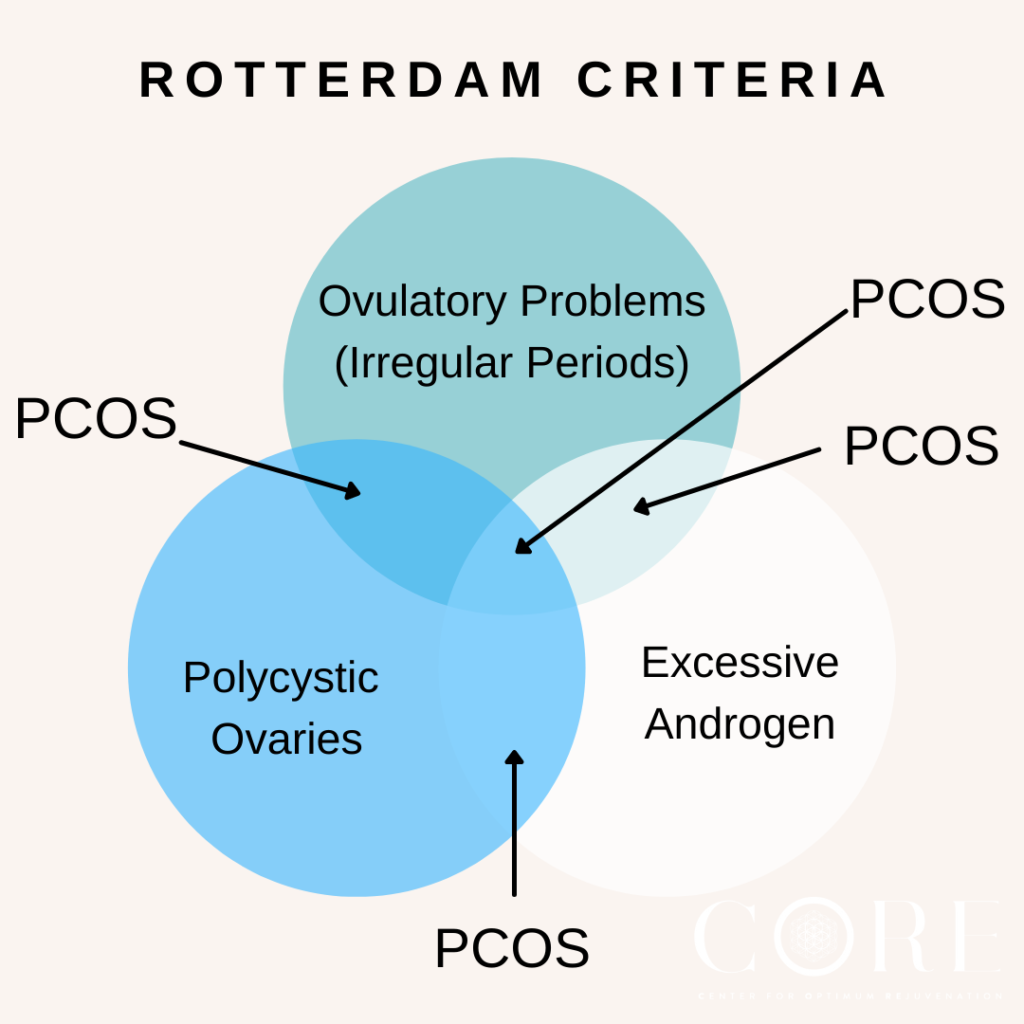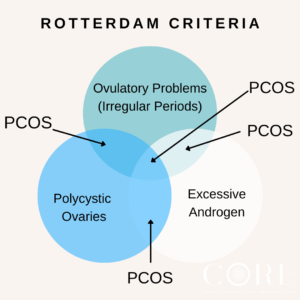Polycystic Ovarian Syndrome and the Rotterdam Criteria


Just because you have Polycystic Ovaries by ultrasound doesn’t mean that you have Polycystic Ovarian Syndrome.
The inverse is also true, even if you don’t have Polycystic Ovaries by ultrasound, you can have Polycystic Ovarian Syndrome.
A syndrome is a group of signs and symptoms that occur together and characterize a particular abnormality or condition, so how is Polycystic Ovarian Syndrome diagnosed? The Rotterdam criteria require the presence of at least two of the three symptoms to be diagnosed with Polycystic Ovarian Syndrome:
1. Ovulatory problem or Annovulation as manifested by irregular or missing menstruation
2. Excess androgen or high testosterone levels which can be observed if you have excessive facial and body hair, aggression, acne and infertility.
3.Polycystic ovaries (PCO) by ultrasound
As you can see from the rotterdam criteria, PCOS is more than ovarian problem, it is more than an ultrasound finding.
It is a complex metabolic, hormonal and systemic inflammation problem.
The first step to having your PCOS managed is getting the right diagnosis.
